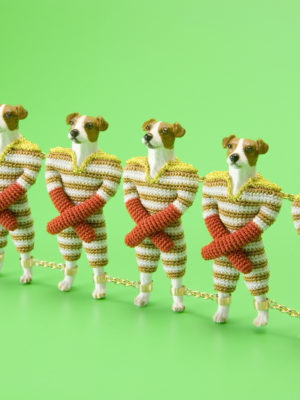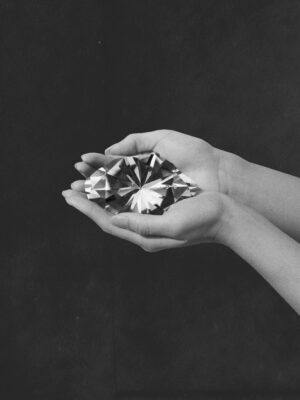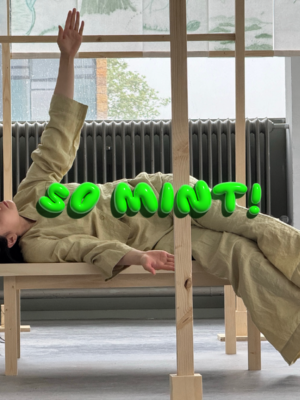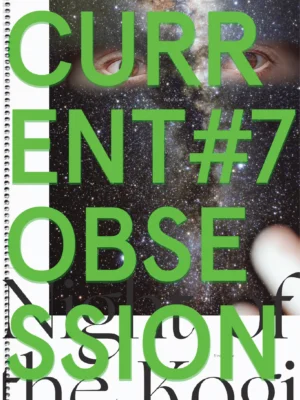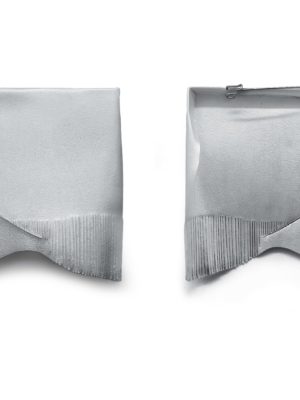
At this year’s exposition, 140 independent jewellers from 38 countries will sell their work directly to consumers, museum shops and gallerists. The organisers of the fair, Astrid Berens and her husband Maarten Bodt, select the participants with two criteria in mind: authenticity and variety of price. This results in a diverse selection which runs the gamut of experience, with ultra-young jewellers alongside the seasoned, and includes makers using unexpected materials as well as smithing virtuosos.
In addition to providing space for sales booths, this year’s fair also pays tribute to the late Dr. Marjan Unger, the beloved jewellery connoisseur, teacher and collector. In the centre aisle there will be an exhibition in which a range of jewellery artists − Unger’s wellknown contemporaries, close friends and former students − will present work that reflects on their relationship to her. They miss her for her curious mind; her interest in costume jewellery, antique jewels, and adornment from far-away places; and for her cheeky neckpieces, which she wore with much bravado. Above all, it turns out, she is missed for her all-encompassing definition of jewellery. Marjan Unger opened the window and gave contemporary jewellery some fresh air. She advocated tirelessly for interdisciplinary practice and saw that all types of jewellery were interrelated and could challenge each other’s boundaries. Jewellery artists who found their place in neighbouring fields such as the design of fashion jewellery or lifestyle accessories were not beneath her. On the contrary, they were to be sought out for their diverse perspectives. Additionally, it was Unger’s legacy that inspired the curated programme of lectures that has recently begun to accompany SIERAAD.
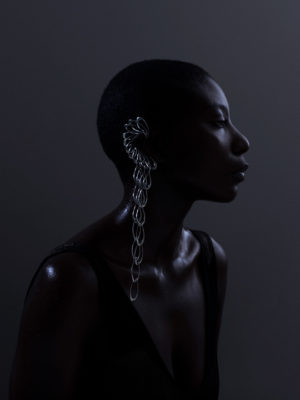
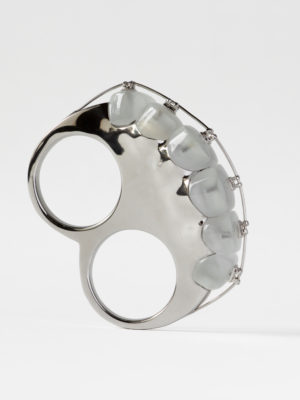
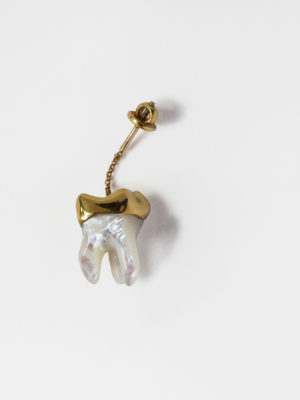
Chequita Nahar, the director of the Maastricht Academy of Fine Arts (MAFAD), is one of the lecturers this year. Nahar, Unger’s former student, knew her well, and Nahar’s way of working can be seen as a continuation of Unger’s ideas. One of the discussions Nahar will participate in will explore the popularity of jewellery that expresses one’s cultural background. An anthropologist and two makers will unravel the dynamics of expressing your own heritage, as distinct from expressing someone else’s heritage or any appropriative cashing-in on that heritage. ‘In Suriname, beads are always integrated in jewellery in order to express certain symbols or translate emotions. They support rituals.’ And this is why, Nahar says, beads play ‘an important role’ in her jewellery. ‘It is remarkable that if I work with my Surinamese background, it is seen as tribal. If John Galliano does it, it is seen as new and sexy.’
Another discussion will focus on commissioning. Over the years, the retired gynaecologist and collector Christina Vermeulen-Meiners has asked several jewellery makers to make work using the symbol of a stork. These commissioned pieces have since blossomed into a peculiar collection, joined by other commissioned works. Her husband, Menno Vermeulen, recalls an exhibition by the jewellery artist Ted Noten in which he displayed only A4 sheets of white paper on which ‘cufflinks’ or ‘brooch’ had been written, together with a price. Anyone who bought one of these pieces of paper became the commissioner, and then the interplay of artistic freedom and the demands of the buyer would begin. It was through this exhibition that Vermeulen acquired a sturdy Ted Noten lapel pin with his own portrait and that of, not his wife Christina, but his favourite Rococo painter, Élisabeth Vigée le Brun.
‘So many designers and so few buyers,’ countless artists lament. Not according to Chequita Nahar. At her academy, she invites students to think as entrepreneurs as well as artists. In terms of sales channels, a fair such as SIERAAD, with its direct customer contact, is an ideal opportunity. Nahar urges artists to be clear about who they imagine wearing their work. She calls it the ‘proactive’ mentality, and it is not about making money above all else: Students should question themselves. Can they live from making jewellery if they [only] have a solo [show] every two or three years? We feel it is important to think about what being an artist means and how to generate new markets and contexts. They have to be aware of price and clientele – where to target them and how.
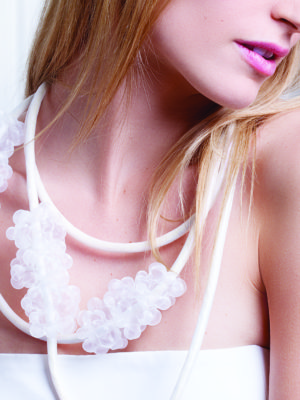
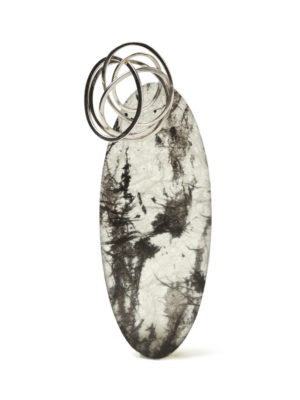

Accounting, product photography, presenting, marketing, commissioning, grant applications and, importantly, decisions such as whether to make one-offs or go into mass production, or whether to opt for local production instead of outsourcing – these are all part of the curriculum. Students are taken to Paris Fashion Week because, as Nahar says, ‘there, serial production plays a crucial role. A piece has to be produced fifty times, or a hundred, or two hundred. In Paris it is not about one-off pieces.’
For her talk about saleability at SIERAAD, Nahar will bring along four designers, among them some former students, who are quickly finding their voices. They are not part of any gallery’s stable collection but are instead exploring other channels. Margherita Chinchio makes wearable pastel-coloured puffs that call out – no, are screaming – to be touched. Behind their Instagram-able, bubble-gum-like appearance and Margherita’s own vibrant image, a digital entanglement of identity and authorship is taking place. In contrast, visitors to Gabriel Guevara’s display will be welcomed into a carefully arranged scene quite different in atmosphere. The viewer will land at a black and white video showing powdered, cracking ‘landscapes’, from which the camera pans out to reveal gold-adorned flesh. This is immediately intriguing but does not reveal the video’s role as a jewellery advertisement. Castro Smith’s tasteful webshop showcases a select few of his rather expensive, intricately engraved bespoke rings. Kalkidan Hoex’s like-minded customers also find her through the web, but especially through her Instagram stories, where she reps her brand theNEWtribe. The main ingredients of her stories are graphics, identity, sneakers, streetwear and Kalkidan’s own electric presence. Displaying her series of 24 theNEWtribe rings at a pop-up gallery in the US is as close as she wants to get to traditional gallery representation.
The makers invited by Chequita have learned to take advantage of the internet to create online worlds accessible to potential buyers across the physical world. If a piece speaks to the buyer, even when touching it and trying it on is impossible, a parcel delivery service is at the ready! These new creators do not fear the mixing of art and commerce or art jewellery and fashion. They borrow what they need from each jewellery field, carrying Marjan Unger’s legacy of interdisciplinary respect on into the future.
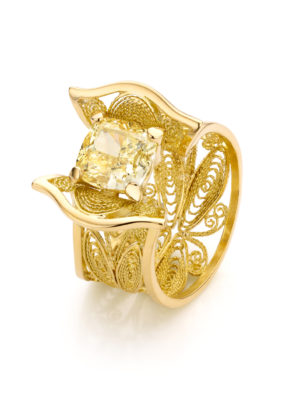
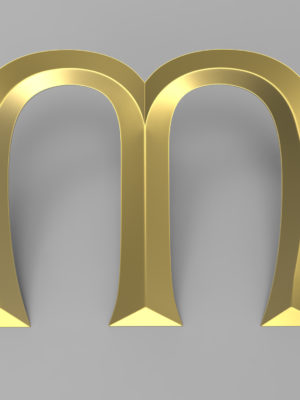

Lectures during SIERAAD Art Fair
Thursday 07–11
15:00–16:30 John de Greef and Suzanne van Leeuwen
17:00–18:30 Button & Buckle up, Bianca du Mortier
Friday 08–11
13:30–15:00 Mieke Groot, Evert Nijland and Melvin Anderson
16:00–17:30 Selling Practices/New Mentalities in Entrepreneurship Chequita Nahar, Kalkidan Hoex and Gabriel Guevara
Saturday 09–11
13:30-15:00 Fred Brom from Steltman Juweliers Bertwin Heyse van Verbeek Schuttelaar
16:00-17:30 Anthropology Henrietta Lidchi, Chequita Nahar and Fatima Essahsah
Sunday 10-11
13:30-15:00 Commissions, Willem Noyons, designer and Interactive 3d visualisation at First Polygon and Christine en Menno Vermeulen Meiners as commissioner, lecture in Dutch
16:00-17:30 Collecting, Cees Leijenhorst, Associate Professor for the History of Modern Philosophy at Radboud Universiteit Nijmegen, lecture in English

This article is published
in the OBSESSED! Jewellery Festival Paper.
OBSESSED! is a biennial jewellery festival taking place in various cities across the Netherlands. OBSESSED! unites the best jewellery-related events – museum and gallery exhibitions, talks, fairs, book presentations and artist open studios – into one intriguing programme put together by Current Obsession.
SIERAAD, Amsterdam’s international Jewellery Art Fair
07–11–2019 until 10–11–2019
Gashouder WesterGasterrein Klönneplein 1, Amsterdam
www.sieraadartfair.com
Combination tickets
One day plus one lecture €24,50
Combination ticket, two day plus one lecture €29,00
Day ticket €18,00
Two day ticket €26,00
All incl. catalogue
Opening times
Thursday 07–11 14:00–21:00
Friday 08–11 11:00–18:00
Saturday 09–11 11:00–18:00
Sunday 10–11 11:00–18:00
